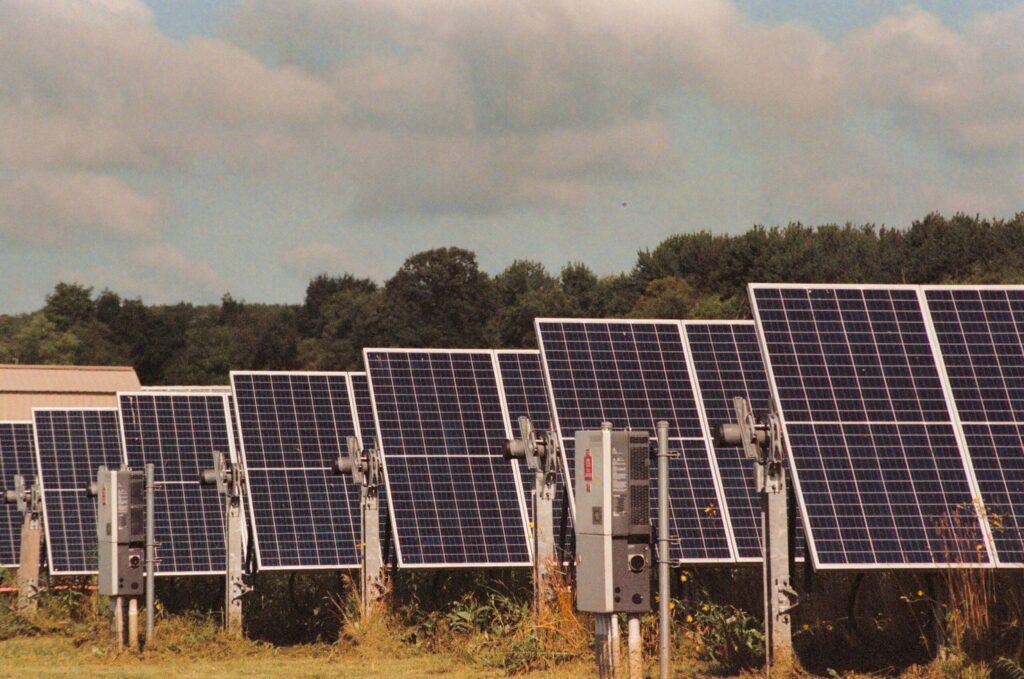The move towards renewable energy has gained significant momentum recently, with solar energy leading the way. As global warming continues to be a critical threat, the need to shift to sustainable energy sources has become increasingly urgent. Advances in solar energy technology have made it more efficient, affordable, and accessible than ever before. This blog discusses the latest solar energy technology, focusing on new solar energy technology and emerging technologies in solar energy that are shaping the future solar energy technology market.
The Evolution of Solar Energy Technology
Solar energy technology has evolved significantly since its early days. Initially, solar panels were bulky, costly, and inefficient, which restricted their use to specialized applications. However, with ongoing research and development, emerging technologies in solar energy have led to substantial improvements. The latest solar energy technology is now more efficient and versatile, serving a broad spectrum of needs from residential rooftops to expansive solar farms.
The Need for Innovation
The global energy demand is soaring due to rising population numbers, urbanization, and industrialization. Conventional energy sources such as coal, oil, and natural gas are limited and significantly pollute the environment. Therefore, there is an urgent need for cleaner, more sustainable alternatives. Solar energy, being both abundant and renewable, presents a promising solution. To address the increasing energy needs effectively, ongoing advancements in the latest solar energy technology are crucial.
Breakthroughs in Solar Panel Efficiency
One of the most notable breakthroughs in new solar energy technology is the improvement of solar panel efficiency. Traditional silicon-based panels typically have an efficiency rate of approximately 15-20%, meaning only a small portion of sunlight is converted into usable electricity. Recent advancements have significantly increased these efficiency rates, marking a substantial improvement in the latest solar energy technology.
Perovskite Solar Cells
Perovskite solar cells represent one of the most promising emerging technologies in solar energy. Created from a class of materials with a distinctive crystal structure, these cells absorb light more efficiently than traditional silicon panels. In laboratory conditions, perovskite solar cells have already achieved efficiency rates exceeding 25%, and researchers are optimistic that future solar energy technology will see even greater advancements in their future performance.
Additionally, perovskite cells are more cost-effective to produce and involve less energy-intensive manufacturing processes. Their flexibility and lightweight characteristics make them well-suited for diverse applications, including building-integrated photovoltaics (BIPV) and portable solar chargers. As future solar energy technology progresses, perovskite solar cells are expected to become a pivotal component in the evolving solar energy. market.
Bifacial Solar Panels
Another advancement in the latest solar energy technology is the development of bifacial solar panels, which are capable of capturing sunlight on both sides. Unlike traditional monofacial panels that absorb light from only one side, bifacial panels can use reflected light from surfaces such as the ground, snow, or water. This dual-sided functionality improves their overall energy production, making them a significant innovation in the field of new solar energy technology.
Bifacial solar panels have demonstrated efficiency improvements of up to 30% over their monofacial counterparts. They excel in environments with high albedo, where substantial sunlight reflection from the ground boosts their performance. As new solar energy technology, bifacial panels are increasingly being adopted in large-scale solar installations, where optimizing energy output is essential.
Advanced Energy Storage Solutions
A key challenge with solar energy is its intermittent nature—solar panels generate electricity only when sunlight is available. To address this issue, emerging technologies in solar energy are focusing on advanced energy storage solutions that can capture and store excess solar energy for use during cloudy periods or at night. These innovations are crucial for overcoming the limitations of solar energy and ensuring a reliable and consistent power supply.
Lithium-Ion Batteries
Lithium-ion batteries have emerged as the preferred choice for solar energy storage, thanks to their high energy density, long lifespan, and decreasing costs. Advances in battery technology have resulted in more efficient and durable batteries capable of storing substantial amounts of solar energy. These latest solar energy technology developments are being integrated into both residential and commercial solar systems, enabling users to store excess energy and lessen their dependence on the grid.
Flow Batteries
Flow batteries are an emerging technology in solar energy that presents a compelling alternative to lithium-ion batteries. Unlike conventional batteries, flow batteries store energy in liquid electrolytes housed in external tanks. This design facilitates straightforward scalability; to increase storage capacity, one simply needs to add more electrolyte.
Flow batteries are especially advantageous for large-scale solar installations, offering reliable, long-duration energy storage. While they are still in the early stages of commercialization, these emerging technologies in solar energy are expected to become a crucial part of future solar energy technology as the need for extensive energy storage solutions continues to rise
Solar Energy and the Internet of Things (IoT)
The integration of the Internet of Things (IoT) with solar energy technology is an exciting development in new solar energy technology. IoT-enabled solar systems are capable of real-time monitoring and optimization of energy production, which increases overall efficiency and provides smarter energy management.
Smart Solar Panels
Smart solar panels equipped with IoT sensors are capable of monitoring parameters such as temperature, sunlight intensity, and panel orientation. This data is analyzed to maximize energy production and ensure the panels operate at peak efficiency. Moreover, these smart panels can interface with other devices within a home or building, facilitating seamless integration with smart grids and energy management systems.
Predictive Maintenance
IoT technology also facilitates predictive maintenance for solar energy systems. By continuously tracking the performance of solar panels and associated equipment, IoT sensors can identify potential issues before they escalate into major problems. This proactive approach minimizes downtime and maintenance costs, ensuring that solar systems operate efficiently and remain in optimal condition.
Case Studies: Real-World Applications of New Solar Energy Technology
To illustrate the impact of the latest solar energy technology and emerging technologies in solar energy, let’s explore a few real-world case studies where these innovations have been successfully implemented.
Case Study 1: Tesla’s Solar Roof in California
Tesla’s Solar Roof is a leading example of new solar energy technology gaining popularity in the residential market. Unlike conventional solar panels, Tesla’s Solar Roof incorporates solar cells directly into the roof tiles, offering a seamless and visually appealing option for homeowners.
In California, where sunlight is plentiful, Tesla’s Solar Roof has been widely adopted, resulting in notable reductions in electricity bills and carbon footprints. This system is complemented by Tesla’s Powerwall battery, which stores surplus solar energy for use at night or during power outages. The combination of solar energy generation and storage in this setup exemplifies the future of residential solar technology, showcasing how the latest solar energy technologies are advancing together.
Case Study 2: Bifacial Solar Panels in the UAE
The United Arab Emirates (UAE) offers one of the largest solar farms globally, the Noor Abu Dhabi project. This extensive solar installation employs bifacial solar panels to optimize energy production in the desert climate. The high reflectivity of the desert sands enables these panels to use additional sunlight, significantly boosting overall energy output.
The Noor Abu Dhabi project exemplifies the potential of the latest solar energy technology to deliver clean, renewable energy on a massive scale. This landmark project not only supplies electricity to hundreds of thousands of homes but also establishes a benchmark for future solar energy technology and large-scale solar installations around the globe.
Case Study 3: Smart Solar Street Lighting in Barcelona
Barcelona has introduced a cutting-edge smart solar street lighting system as part of its smart city initiative. These streetlights are outfitted with IoT sensors and solar panels, enabling them to function autonomously from the grid. The smart system adjusts lighting intensity according to the time of day and pedestrian activity, thereby optimizing energy consumption.
This new solar energy technology has reduced energy consumption and maintenance costs for the city while enhancing public safety. Barcelona’s smart solar street lighting is a shining example of how emerging technologies in solar energy can be integrated into urban infrastructure to create more sustainable cities.
The Future of Solar Energy Technology
Looking ahead, the role of solar energy in the global energy market is set for significant expansion. Future solar energy technology is expected to deliver even higher efficiencies, reduced costs, and wider applications. Innovations such as flexible solar panels, transparent solar cells, and solar-powered vehicles are already emerging, poised to transform how we capture and use solar energy.
Furthermore, the ongoing integration of solar energy with emerging technologies in solar energy, such as artificial intelligence (AI) and blockchain, will lead to more intelligent and decentralized energy systems. These advancements will increase the accessibility of solar energy while also increasing its resilience and adaptability to society’s evolving needs.
Conclusion
Advancements in new solar energy technology are bringing us nearer to a sustainable future powered by renewable resources. Innovations such as high-efficiency solar panels like perovskite and bifacial cells to the integration of IoT and smart systems are driving a wave of transformation in the solar energy sector. These developments are reshaping how we generate and consume energy, highlighting the profound impact of the latest solar energy technology and setting the stage for future solar energy technology.
As emerging technologies in solar energy advance, the potential for solar power to meet global energy needs becomes more achievable. Initiating these innovations will help us reduce dependence on fossil fuels, decrease carbon emissions, and build a cleaner, more sustainable world for future generations. Moreover, The ongoing evolution of new solar energy technology underscores the promise of a more sustainable energy future.The future of solar energy is indeed promising. With ongoing research, investment, and adoption, new solar energy technology is set to play a crucial role in defining the energy market of tomorrow.


